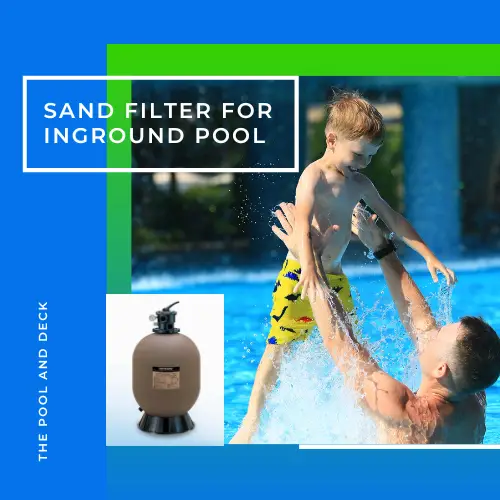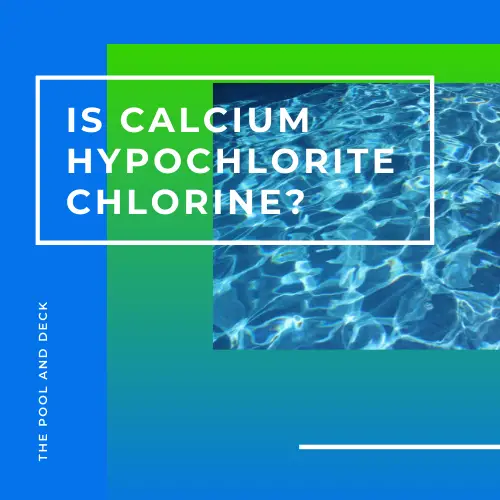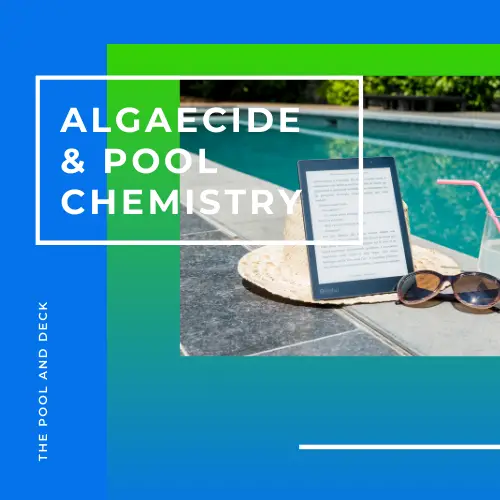7 Terrific Advantages of Sand Filter for Inground Pool!
Sand Filter for Inground Pool: Is It Worth It?
Opting for a sand filter for inground pool is certainly the right decision. There are 7 terrific advantages that make the choice of a sand filter for an inground pool totally worth it!
The 7 Terrific Advantages of Using a Sand Filter for Inground Pool are:
- 1. Sand Filters are Cost Effective
- 2. Sand Filters are Highly Durabile
- 3. They are Easy to Backwash
- 4. They are Easy to Install
- 5. Maintenance Cost of Sand Filter is Low
- 6. You have a Choice of Filter Media
- 7. A Sand Filter will give you Consistent Performance

So when it comes to picking the right filter for your inground pool, there are three main types of filters to choose from, each with its own unique features and benefits.
Sand Filters
Sand filters are the most common type of pool filter. They work by pushing the contaminated pool water through a layer of sand to trap debris and contaminants.
The filter media is silica sand which will trap any solid particle over 20 microns. There are alternate media options, such as Zeolite or Filter Glass, that can enhance the filtration efficiency of your sand filter.
Sand filters are cost effective, durable and easy to operate and maintain. You will need to occasionally backwash it to remove trapped debris from the sand. The media will also need to be replaced, typically every 5 – 6 years.
DE Filters
DE filters use a fine powder made out of fossilized diatoms, known as diatomaceous earth (DE). The DE is deposited on a plastic or powder-coated metal grid with a nylon or polyester mesh screen to form a thin filter cake on the surface.
Pool water is forced through the filter cake. Solid particles such as dirt and contaminants are trapped, while clean water passes through and is returned to the pool.
DE filters are able to capture particles as small as 2-5 microns as DE is a lot finer than sand. They are effective in even eliminating algae spores before they get a chance to grow and inundate your pool.
DE filters are the most expensive and high-maintenance option and possibly an overkill for a backyard pool. They are the preferred choice for public pools though!
Cartridge Filters
Cartridge filters use a replaceable cartridge made from a filter fabric that is pleated to increase the filtration area. The pool pump pushes the water through the cartridge which traps the dirt & debris.
Cartridge filters can capture particles as small as 10 – 15 microns. Unlike sand filters, cartridge filters can not be backwashed. The cartridge must be extracted from the filter and cleaned either with a garden hose or by soaking it overnight in a pool filter cleaner solution.
Moreover, the cartridge must be replaced every 1-2 years. Cartridge filters do have the advantage of lower cost, easier installation, etc. but are more suited for smaller above ground pools.
7 Terrific Advantages of Using a Sand Filter for Inground Pool
Here are the 7 Terrific Advantages of Using a Sand Filter for Inground Pool:
As an Amazon Associate, I earn from qualifying purchases.
1. Sand Filters are Cost Effective
When considering the cost effectiveness of a pool filter for an inground pool you must take into account the following:
Initial Purchase Price
The design flow rate is an important consideration for selecting a pool filter as it determines the Turnover (Gal in 8 Hrs). The Turnover (Gal in 8 Hrs) should be 2 to 3 times the pool volume. So for a pool size of 20,000 gallons, a Turnover (Gal in 8 Hrs) of 40,000 to 60,000 is recommended. This translates to a design flow rate of 83 – 125 GPM.
The table below gives you an idea of the initial purchase price for filters in the 90 – 100 GPM range.
Note: Please recheck prices as they could be different on the location and date of purchase. Click on the links below.
Service Life
Though the initial price of a sand filter is higher than a similar sized cartridge filter, the filter media needs to be changed only every 5 – 6 years. On the other hand, cartridge filters need to be replaced every 1-2 years. And they are more expensive too!
Note: Cartridge filters do have the advantage of lower cost, easier installation, etc. but are more suited for smaller above ground pools.
2. Sand Filters are Highly Durable
A sand filter is constructed from durable materials and is built to last. The filter tank and internal components are made from corrosion-resistant materials like fiberglass or heavy-duty plastic.
A sand filter can withstand extreme weather, wear & tear and exposure to pool chemicals. Even with minimal maintenance, a sand filter can last up to 15 years. Regular inspection and occasional parts replacement is all that is required!
3. They are Easy to Backwash
A sand filter will accumulate debris in the sand bed, but that is pretty easy to clean up. All you need is the occasional backwashing and rinsing to remove trapped debris from the filter media.
Backwashing is a simple process where the flow of water is reversed through the filter, dislodging and flushing out any trapped debris. To backwash a sand filter you just need to attach the backwash hose and set the multiport valve MPV to backwash.
The frequency of backwashing depends on pool usage load and weather conditions. As a rule of thumb, you must backwash a sand filter only when the pressure gauge reading is 10 psi above normal pressure levels.
4. They are Easy to Install
A sand filter is relatively easy to install and maintain. This is an advantage that is perfect for pool owners with basic DIY skills. You can successfully install a sand filter with just the basic guidance from a product manual and some helpful tips from youtube videos.
Installation, parts replacements and regular maintenance do not require any special tools or equipment that a keen DIYer will not already have.
5. Maintenance Cost of Sand Filter is Low
A sand filter has low maintenance costs due to its simple design and minimal upkeep requirements. It does not require frequent replacement of filter media or other costly parts, and is easy to troubleshoot and repair.
The sand in the filter only needs to be replaced once every 5-7 years. Changing sand in a sand pool filter is a labor intensive job but does not require any special skills or tools. As such you can change the sand at very little cost.
Moreover, a sand filter does not have any moving parts or complicated mechanisms, which further reduces the possibility of breakdowns and need for costly repairs.
6. You have a Choice of Filter Media
The filtration capability of a sand filter is sometimes cited as a disadvantage because commonly used silica sand can not trap contaminants smaller than 20 microns. True, but alternative media can enhance the filtration capability.
ZeoSand, a Zeolite Pool Filter Media is a good alternative to silica sand. Zeolite will filter out contaminants as small as 10 – 15 microns which is comparable to a cartridge pool filter.
If you want to prevent algae growth, consider switching to Brightline 100% Recycled Swimming Pool Filter Media Glass. It is expensive but can filter particles as small as 5 microns. This is the same filtration capability as a DE pool filter.
7. A Sand Filter will give you Consistent Performance
A sand filter is an excellent choice for your inground pool as it can provide consistent and reliable performance over time. A sand filter uses time-tested design principles and rugged components to ensure reliability.
A sand filter offers a large filtration surface area that can effectively handle large volumes as channels for water passage evolve as the filtration proceeds. A sand filter is ideal for even large inground pools.
Thank you very much for reading the post. I do hope you found it informative and helpful.






